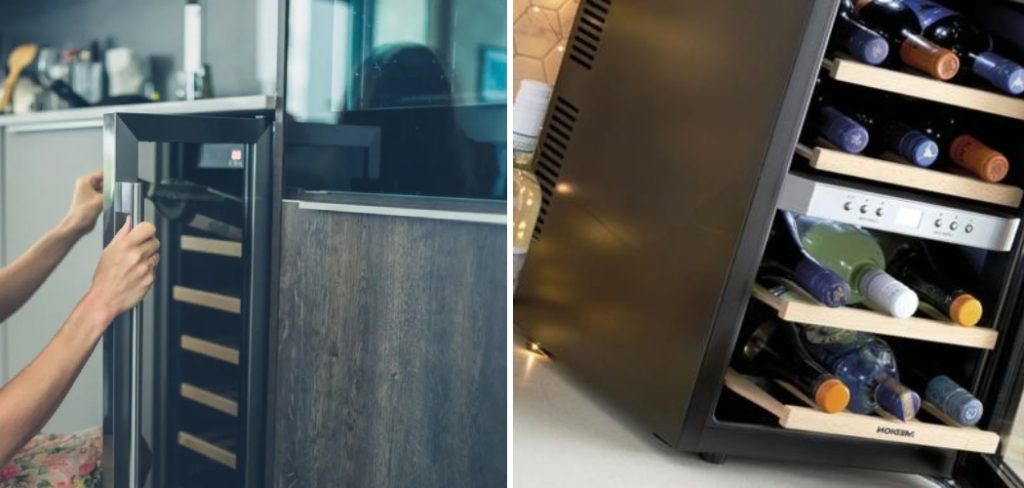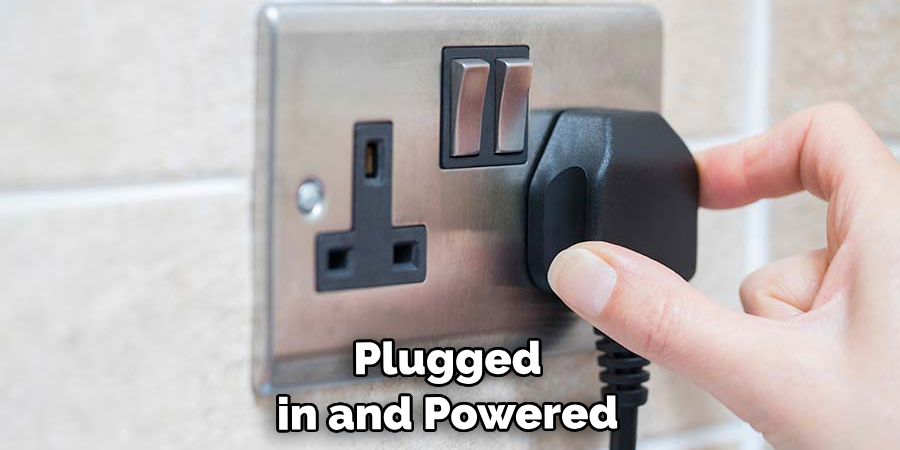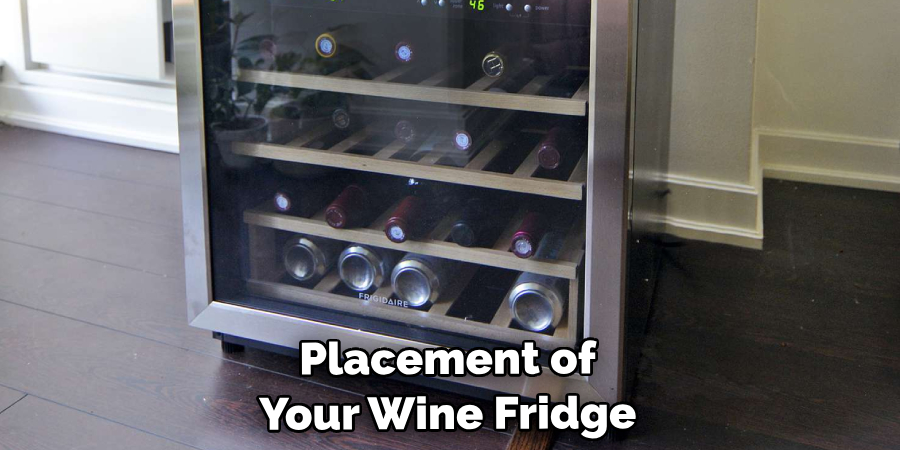Discovering that your wine fridge is not cooling can be a cause for concern, especially when you have precious bottles of wine that need to be stored at optimal temperatures. A wine fridge not cooling can be attributed to a range of factors, from simple settings adjustments to more complex technical issues. Understanding how to troubleshoot and resolve this problem is essential for maintaining the quality of your wine collection.

In this guide, we will delve into how to fix wine fridge not cooling. From checking basic settings to addressing potential mechanical or electrical problems, we will provide you with a comprehensive set of methods to ensure that your wine fridge regains its cooling efficiency and keeps your wines perfectly chilled.
Importance of Maintaining Proper Cooling in a Wine Fridge
When it comes to your wine collection, proper cooling is key. Not only can improper cooling damage the flavor of your wines, but it can also cause permanent damage to the bottles themselves. That’s why having a functioning wine fridge and keeping it at the right temperature is so important.
Unfortunately, like any other appliance, wine fridges can occasionally go wrong and stop working as expected. If your wine fridge is not cooling, it can be both stressful and costly to replace. Fortunately, there are some tips you can try that might be able to save you from having to buy a new fridge altogether.
In this article, we’ll cover some of the steps you can take if your wine fridge isn’t cooling properly. We’ll also look at what you can do to ensure that your fridge stays working efficiently for as long as possible.
First, let’s take a look at some of the potential causes of why your wine fridge isn’t cooling. There could be an issue with the compressor failing or thermostat setting not being adjusted properly. Faulty wiring and blocked air vents can also be to blame.
Once you’ve identified the cause of the problem, you can try some troubleshooting steps. If the compressor is failing, for example, check that it’s plugged in and powered on correctly. Additionally, if your thermostat settings aren’t working properly, adjust them so that they are set to the right temperature for your wines.

How a Faulty Door Seal Can Affect Cooling Efficiency
When a wine cooler is not cooling properly, one of the most common causes of this issue is a faulty door seal. A wine cooler relies on an airtight seal to keep the cold air in and the warm air out. If there is any gap between the door and the frame, then cold air will escape and warm air can enter, resulting in inefficient cooling.
To check for a faulty seal, open the door and inspect the perimeter of it. Look to see if there are any noticeable gaps between the seal and frame. If so, then you’ll need to replace the seal in order to restore proper cooling efficiency. To do this, purchase a new door gasket from your wine fridge manufacturer or an appliance store that specializes in wine coolers.
Once you have the new gasket, remove the old one by pulling it off of the door frame. Carefully measure and cut the replacement gasket to fit your refrigerator’s door opening. Then, press it firmly into place along the perimeter of the door frame. Be sure to pay special attention to any areas that may be prone to leaking.

Once the replacement gasket is in place, you should be able to restore the cooling efficiency of your wine fridge and enjoy perfectly chilled bottles once again! With a simple fix like this, it’s easy to keep your favorite wines at their ideal temperature.
If replacing the door seal doesn’t solve the problem, then you may need to investigate other potential causes of the cooling issue. This could include a faulty thermostat, a depleted compressor, or other mechanical issues that require professional repair services. Be sure to consult your owner’s manual for specific troubleshooting instructions and contact customer service if needed.
10 Methods How to Fix Wine Fridge Not Cooling
Method 1: Check the Power Source
When faced with the perplexing issue of a wine fridge not cooling, the journey to restoration commences with the simplest of considerations – the power source. In the intricate interplay of modern appliances, a disrupted power supply can orchestrate a cascade of malfunctions, leaving your wine fridge devoid of its cooling prowess.
A momentary power interruption, a loose connection, or a malfunctioning outlet can all contribute to this disheartening situation. It is in this unassuming yet pivotal step that you wield the power to rekindle the life force of your fridge. Gently inspect the power cord, ensuring its firm connection to the outlet.
Method 2: Verify Temperature Settings
The heart and soul of any wine fridge’s cooling operation lie within the realm of temperature settings. Yet, even in this seemingly straightforward realm, the seeds of confusion can take root. As you embark on your quest for a cooling solution, journey to the heart of your wine fridge – the thermostat settings. Herein lies the potential for a simple yet transformative resolution.
Cast your gaze upon the digital or manual controls, ensuring that they align with the recommended temperature range for storing your precious wines. With subtlety, you may uncover that your wine fridge has endowed you with the gift of separate temperature zones for red and white wines.
Method 3: Clean the Condenser Coils
Within the enigmatic labyrinth of an appliance, there exists a critical component that wields profound influence over its cooling efficiency – the condenser coils. In their noble pursuit of heat dissipation, these coils bear the brunt of accumulating dust and debris, a fate that can stifle their ability to perform.
Herein lies your chance to intervene, to extend a hand of meticulous care and restoration. With the wisdom of a technician and the gentleness of an artisan, unplug the wine fridge and peel back the veil to reveal the coils’ location – often nestled at the unit’s rear or concealed beneath.

Method 4: Check for Blocked Air Vents
In the theater of cooling, the concept of airflow reigns supreme. Adequate airflow, like a gentle breeze through a vineyard, ensures that temperatures are harmoniously distributed throughout your wine fridge. Yet, in the midst of this orchestration, obstructions can emerge – an item inadvertently placed too close to an air vent, or the creeping presence of debris. These obstructions, seemingly innocuous, wield the power to disarray the symphony of cooling. With a discerning eye, inspect the air vents, freeing them from any impediments that hinder the free circulation of air.
Method 5: Inspect the Door Seal
A wine fridge’s door seal – a guardian of coolness, a sentry against temperature infiltration. Yet, even the noblest of sentries can be subject to wear and tear. Your journey to remedy a non-cooling wine fridge beckons you to investigate the door seal. Cast your gaze upon this rubber guardian, its integrity subject to scrutiny. Cracks, tears, wear – these are the insignias of a compromised seal that can usher cold air to freedom.
Should your inspection yield evidence of distress, consider embarking on a renewal mission. Replace the door seal with one that boasts the strength and resilience to fortify the cooling fortress.
Method 6: Assess the Evaporator Fan
In the hidden recesses of your wine fridge resides an unsung hero – the evaporator fan. This humble yet essential component conducts the symphony of air circulation, ensuring that every bottle is kissed by the gentle breath of cooling. In your quest to mend the non-cooling affliction, lend your ears to the song of this fan.
As you stand in its presence, operational and vigilant, the sound of its hum signifies normalcy. Should silence prevail, consider the possibility of a malfunction. Engage the services of a technician to explore this realm, restoring the fan’s voice and reinstating its vital role in the cooling concerto.
Method 7: Evaluate the Compressor
At the heart of the refrigeration symphony stands the regal conductor – the compressor. This mighty force orchestrates the compression and circulation of refrigerant, channeling the essence of cooling throughout the fridge. Yet, as with any maestro, even the compressor can stumble. In your pursuit of a cooling resolution, lend your ear to its voice – a symphony of clicking or buzzing sounds that may betray its unrest.
If suspicions arise, tread carefully, for the realm of compressor diagnostics requires expertise. Seek the guidance of a professional technician, a virtuoso in the art of refrigeration mechanics.
Method 8: Ensure Proper Ventilation
Positioned within the confines of your home, the wine fridge relies on proper ventilation to fulfill its cooling duties. Yet, in the art of placement, space is not merely an afterthought – it is a lifeline. Adequate space around the wine fridge ensures the dissipative flow of heat, akin to a vineyard benefiting from ample sunlight. Confined spaces, be they enclosed cabinets or cluttered corners, can breed overheating and cooling irregularities.
As you contemplate the placement of your wine fridge, envision a space that affords the gift of free airflow, permitting the escape of heat without restraint.

Method 9: Check for Refrigerant Leaks
Refrigerant, the lifeblood of cooling, can sometimes escape through elusive leaks. Should you suspect this stealthy departure, approach the situation with caution and deference. Refrigerant leaks demand the touch of a professional, one skilled in the art of diagnosis and reparation. With specialized equipment and knowledge, a technician can delve into the intricacies of refrigerant systems, sealing leaks and rejuvenating the cooling circuit.
Method 10: Professional Assistance
In the tapestry of solutions, the role of the professional stands as an essential thread. When your endeavors to restore cooling have traversed the realms of the above methods, yet the wine fridge remains resolute in its non-cooling demeanor, the time has come to summon professional assistance. An experienced appliance repair technician assumes the mantle of a detective, meticulously unraveling the complexities that elude the untrained eye. Their expertise spans a spectrum – from diagnosing intricate issues to executing precise repairs.

Conclusion
So there you have it – by resolving any issues in the thermostat, condenser coils, or compressor, you can ensure your wine fridge raises its temperature and provides consistent cooling. If the issue persists and you need help, don’t hesitate to call a technician. As for cleaning and maintenance of your cooling unit, make sure to clean dirt from its external parts at least twice a year.
Keeping inspection and maintenance schedules helps spot any problems early on, saving both time and money. At this point we hope our advice on how to fix wine fridge not cooling has made it easier for you to assess and solve any climate-controlling issue your appliance may be facing. And if all else fails remember one thing – call a technician! They’re the experts that can help you in such cases and leave little room for error.

